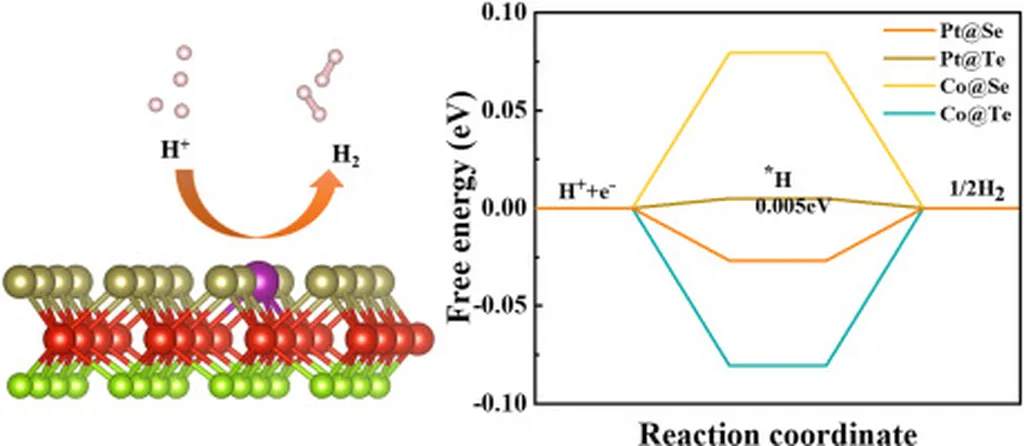In the realm of energy research, a team of scientists from various institutions, including the University of Hyderabad, the Leibniz Institute for Solid State and Materials Research, and the Indian Institute of Technology Hyderabad, has delved into the potential of Janus layers for applications in photocatalysis and photovoltaics. Their study, titled “Prediction of atomic H adsorption energies in metalloid doped MSSe (M = Mo/W) Janus layers: A combined DFT and machine learning study,” was published in the Journal of Materials Chemistry A.
Janus layers, which are two-dimensional materials with asymmetric surfaces, have garnered significant attention for their unique properties. In this study, the researchers focused on MSSe layers (where M is either molybdenum or tungsten, and X is either sulfur or selenium), which have already been experimentally realized. These layers exhibit positive adsorption energies for atomic hydrogen, indicating that the process is endothermic, or energy-consuming.
The researchers investigated how the adsorption of atomic hydrogen on these layers changes when metalloid dopants like boron, silicon, and germanium are introduced. They found that substituting these dopants into the pristine MSSe layers alters the local symmetry, bonding character, and charge distribution. This, in turn, increases the number of active sites for hosting hydrogen adsorption and reduces the adsorption energy, making the process more favorable.
The team studied the energetics of hydrogen atoms at various sites, both atomic and interstitial, to identify the most favorable active site on the MSSe Janus layers. Their density functional theory (DFT) calculations revealed that the adsorption process becomes spontaneous and less attractive in the presence of atomic site dopant substitution. However, interstitial site substitution results in an endothermic behavior.
To streamline the process of predicting hydrogen adsorption energy, the researchers developed a supervised machine learning model. They utilized 23 elemental features of the atoms involved in the structure, eliminating the need for DFT calculations in feature design. Principal component analysis was employed to reduce the dimensionality of the feature space, yielding independent features that are mutually orthogonal. The model was implemented as a multi-layer perceptron regressor with two hidden layers, and data augmentation techniques were used to enhance the accuracy of the neural network model.
The practical applications of this research for the energy sector are significant. By understanding and optimizing the adsorption of hydrogen on these Janus layers, researchers can potentially improve the efficiency of photocatalytic and photovoltaic processes. This could lead to more effective solar energy conversion and storage systems, contributing to the broader goal of transitioning to renewable energy sources.
In conclusion, this study highlights the potential of Janus layers in energy applications and demonstrates the power of combining DFT calculations with machine learning techniques to predict and optimize material properties. The findings could pave the way for more efficient and cost-effective energy technologies.
This article is based on research available at arXiv.

